Triturus carnifex


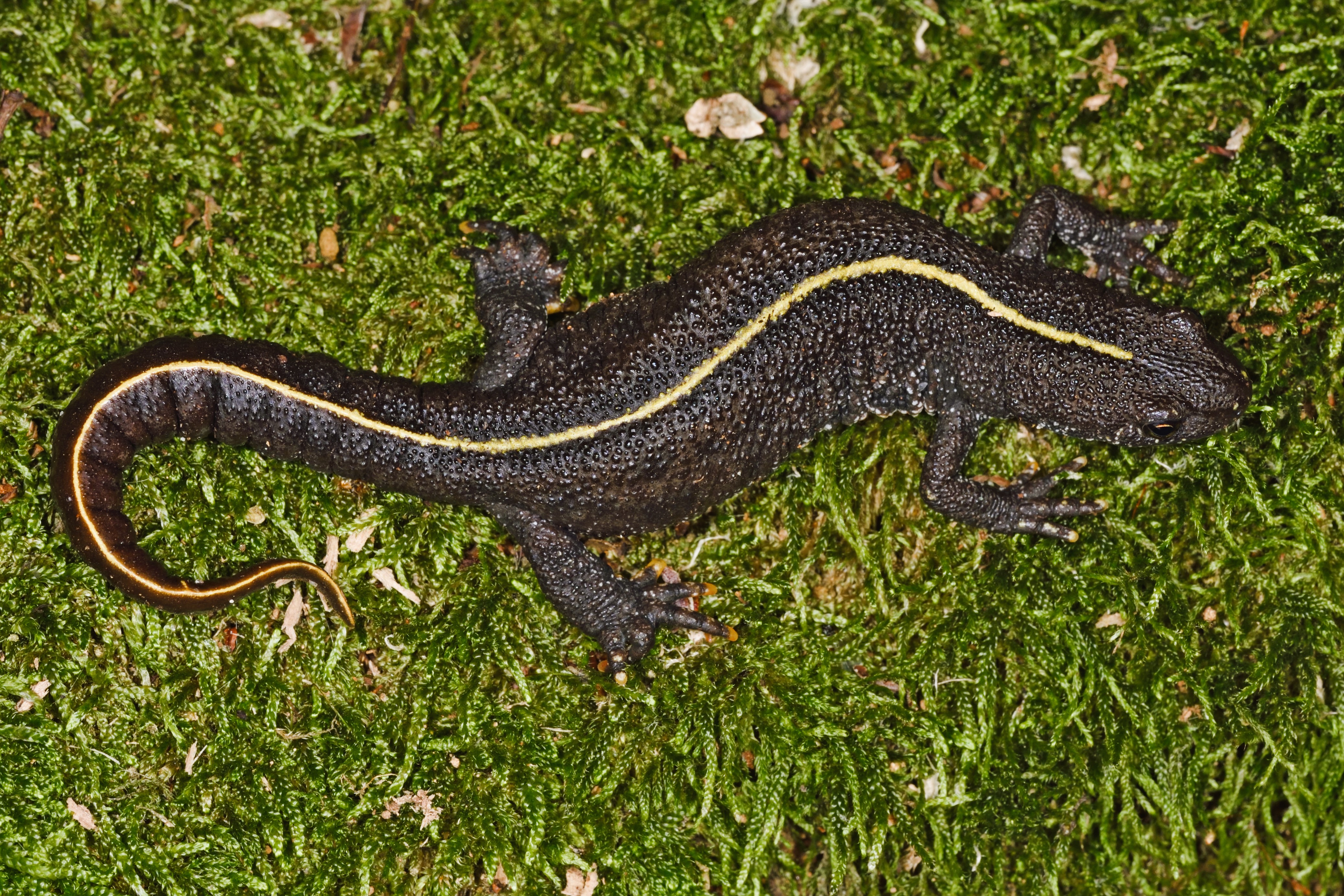

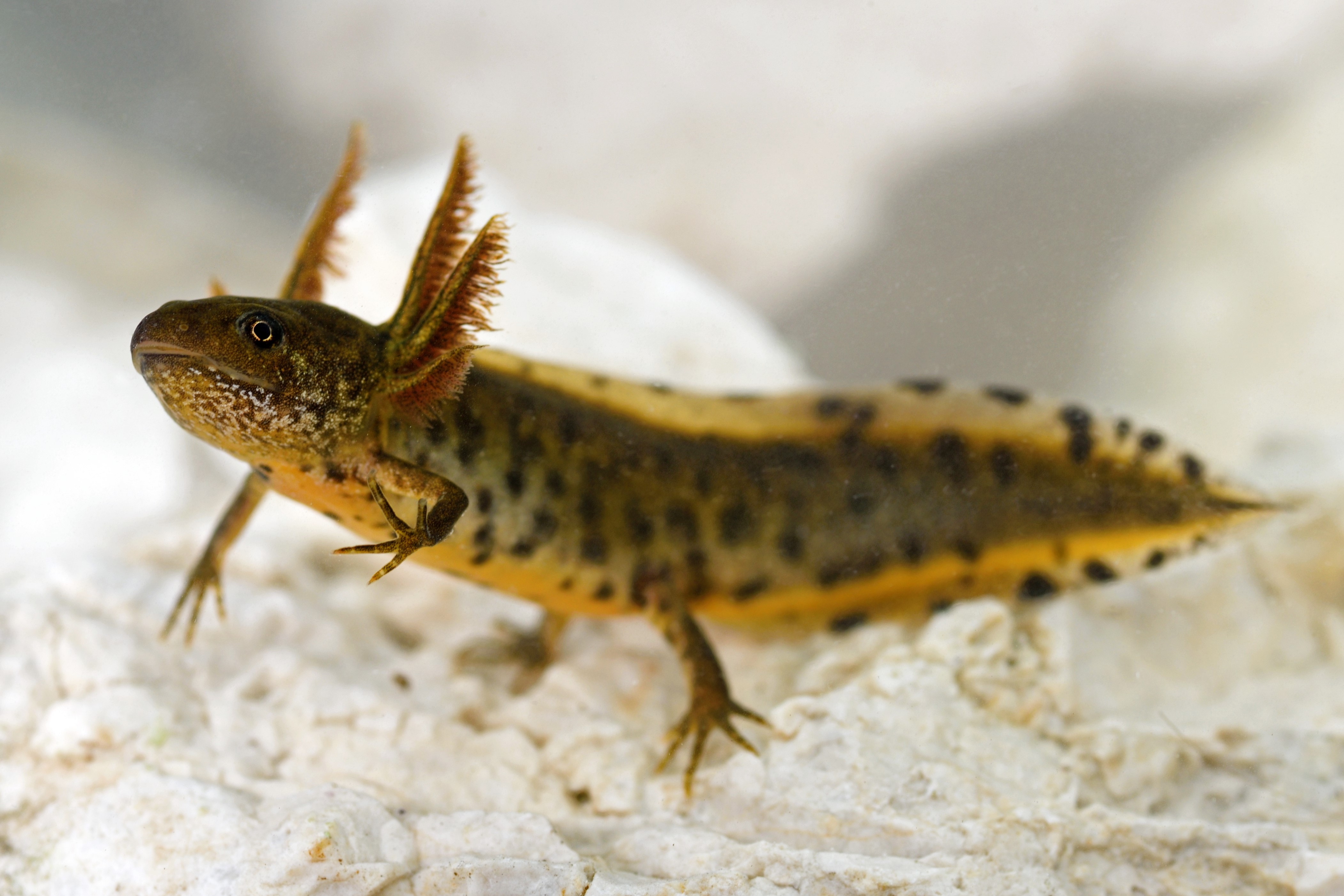
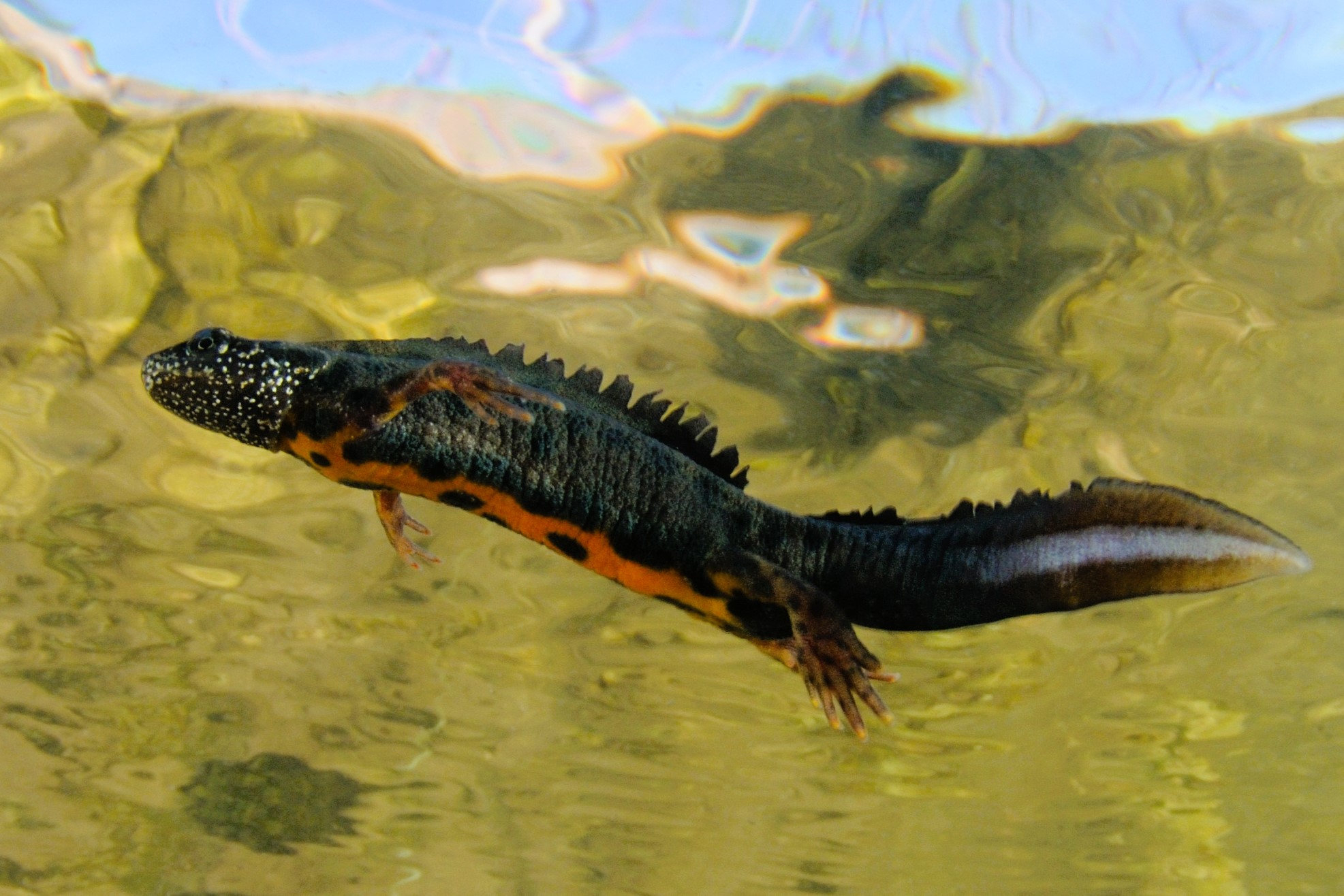

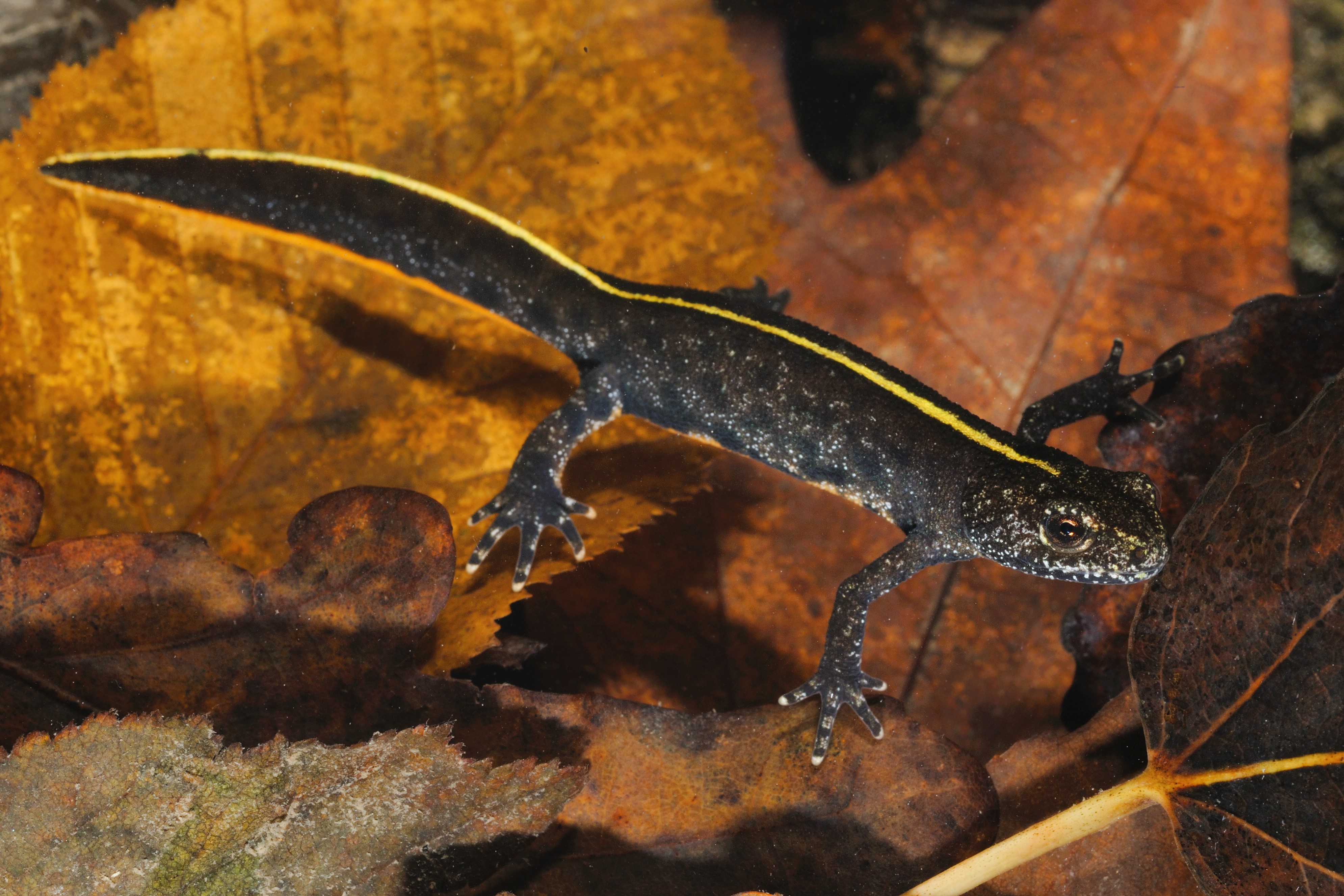
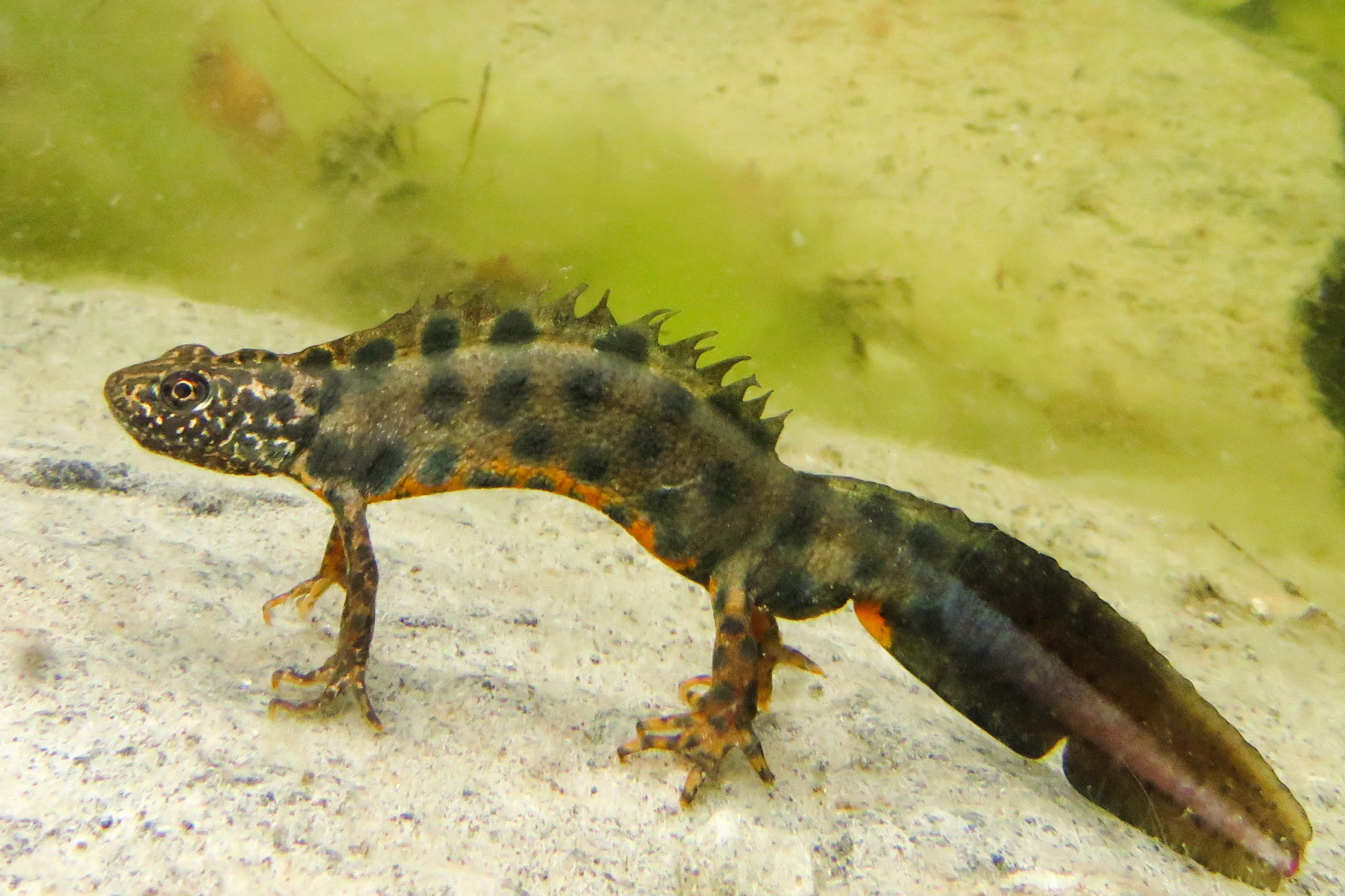



Amphibia → Urodela → Salamandridae → Triturus → Triturus carnifex
Pesicu-Can, Pescekan, Labrena, Grìgoa d'aegua, Sgrigua d'ègua
The Italian Crested Newt is one of the largest newts found in Europe.
Females can reach 7 in (18 cm) in length, with males generally being slightly smaller.
The body is slender, supported by four sturdy limbs and ending in a long, laterally flattened tail equipped with a well-developed swimming fin, an ideal adaptation for aquatic life.
The dorsal coloration ranges from brown to blackish, with females and juveniles marked by a yellowish vertebral stripe.
The belly, very striking during the breeding season, is bright orange or yellow with large dark spots, while the throat shows typical mottled dark green and white markings.
During the breeding period, males develop a wavy dorsal crest that continues onto the tail, whose saw-toothed outline and iridescent, pearly reflections light up the ponds with unexpected colors and brilliance.
The breeding season is also marked by a peculiar courtship behavior: the male performs undulating tail movements to attract the female, culminating in the offering of the spermatophore.
Triturus carnifex is an Italian endemic species, widely distributed in peninsular Italy but also present in isolated populations in parts of Austria, Slovenia, Croatia, southern Switzerland, and, rarely, Bavaria.
In Liguria, it is considered rare and localized: in the province of Savona, it is currently known from only two confirmed sites on Monte Beigua, where it survives in small aquatic habitats still little altered by humans.
It prefers permanent or semi-permanent aquatic environments such as peat bogs, ponds rich in aquatic vegetation, and large watering troughs, located in lowland and mid-hill areas.
The depth of the water and the presence of submerged plants are essential for the life cycle, providing both hiding places and sites for egg-laying.
Outside the breeding period, it inhabits humid woodlands and damp clearings, sometimes even natural cavities, where it takes refuge and overwinters.
This salamander exhibits strongly seasonal habits.
During the breeding period, from April to June, it leads a largely aquatic life: reproduction occurs in still waters, where the male courts the female with rhythmic tail movements, depositing a spermatophore that the female collects with her cloaca.
Eggs are laid singly, protected among the leaves of submerged plants: after about 20 days, the larvae hatch fully formed, already bearing the prominent external gills typical of the juvenile stage.
After the breeding period, the Italian Crested Newt spends most of its life on land, avoiding the winter cold between December and February in natural cavities, under rocks, decaying wood, old walls, or caves, only leaving to hunt on humid or rainy nights.
A voracious predator, it feeds on aquatic invertebrates—insects, crustaceans, annelids, and mollusks—and, when necessary, does not disdain small vertebrates, including young newts, even of its own species.
The diet varies according to the local availability of prey and the age of the individual, including aquatic insect larvae, small tadpoles, and sometimes even eggs of other amphibians.
Adults and larvae are primarily preyed upon by aquatic snakes such as the Grass Snake ( Natrix helvetica ), the Dice Snake ( Natrix tessellata ), and the Viperine Snake ( Natrix maura ), as well as by aquatic birds—Herons (Ardea cinerea), Night Herons (Nycticorax nycticorax), Storks (Ciconia ciconia), and Cormorants (Phalacrocorax carbo)—and predatory fish such as Pike (Esox lucius), Wels Catfish (Silurus glanis), Trout (Salmo trutta), and other introduced salmonids or cyprinids.
Additionally, the younger stages are also vulnerable to predatory insects such as backswimmers (Notonecta spp.), other newts, and Green Frogs ( Pelophylax kl. esculentus , Pelophylax kurtmuelleri and Pelophylax lessonae ).
Among the main threats are the destruction and alteration of aquatic habitats, the introduction of invasive predatory species, water pollution, and the ongoing fragmentation of suitable ecosystems.
The genome of the Italian Crested Newt is among the largest in the animal kingdom—almost five times the genomic size of humans—a feature that has attracted scientific interest regarding the evolutionary processes of salamanders.
Despite its size and passive defenses, no skin secretions are known to be toxic to humans, nor are there any other toxins of clinical significance.
Research on its biology and the resilience of relict populations, however, is a crucial indicator of the health of lowland and hill wetland environments.